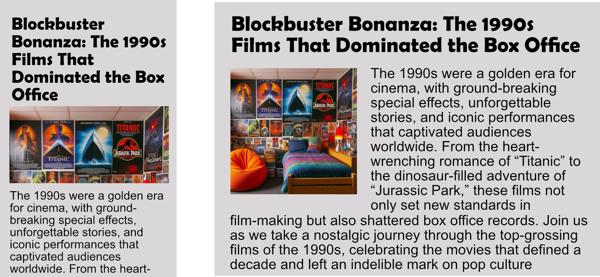In the world of web-design, pixel perfect is a term that's been around since designers went digital and started laying out website designs. Quite simply, it refers to the idea that a web design should be perfectly measured, sharp, and organized down to the last pixel of screen space.
By a similar definition, pixel perfect also refers to the exact translation of a design (typically a stylish, eye-popping layout done in Photoshop) being translated to a website with every color, line, shape, whitespace, and pixel in the exact place as the mockup. This was a major selling point for web designers in the 2000s and 2010s: the best web dev teams could translate slick mockups to "pixel perfect website layouts" and achieve the marketing department's exact vision.
What About Responsive Design?
Here's the thing - this form of rigid, pixel perfect design has been dead for a long time. When responive web design become mainstream, website layouts shifted from static, rigid designs (pixel perfect!) to designs that lined up with multiple screen sizes (desktop, mobile, tablet, etc.).
A simple of example of responsive web design:
Even in 2024 it's quite common for designers to mock up separate designs for each device (and looking to achieve pixel perfect layouts on each). The very best modern responsive web designs, however, use fluid design. Fluid design simply reshapes content and layout to fit whatever viewport and scale is available on a given device. Content looks equally great on a watch, a mobile phone, a tablet, or even a large TV without defining specific breakpoints for each screen size.
Hierarchy Wins the Day
With so many different screen sizes and device types out there, it's impossible to create pixel perfect designs for every screen. Instead, it's important to understand the hierarchy of your content and ensure it's presented in a way that highlights key content and messages for users no matter what device they are using.
From a technical perspective, responsive design typically targets two to four breakpoints (one for each screen size). With a hierarchy-focused fluid approach, there are enough breakpoints to re-flow content to always fill the available screen real estate. By following this approach, content will always look good on any device.
So what term should we be using to replace pixel perfect when talking about accuracy and completeness of web designs? Maybe one of these:
- Content-driven design - this is actually a thing
- Customer-centric design - it sounds a little corporate...
- Hierarchy-first flow - I like this one, but it probably overlaps with the concepts of "content-driven design"
What do you think?

